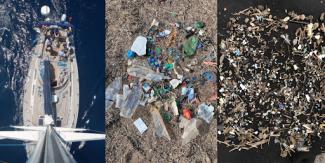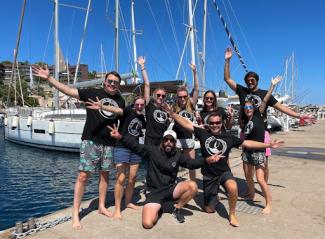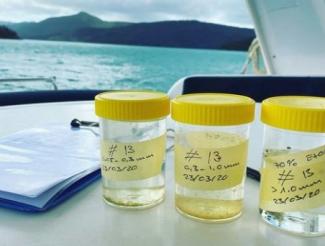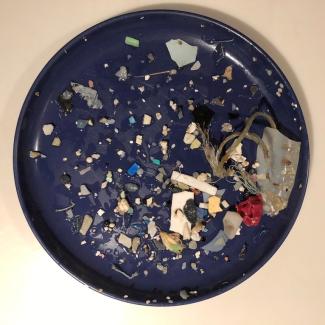Improving this emerging field of study

The National Centers for Environmental Information (NCEI) archives data collected by a variety of scientists and institutions. The partnership between NCEI and nonprofit organization Sail & Explore Association has improved and expanded the Marine Microplastics database. The goal of this partnership is to not only expand the database, but to establish a diverse international community of public users and data providers.
Sail & Explore Association
Sail & Explore Association is an advocate for the environment and the impact microplastics have on human health and marine conservation. Roman Lehner is the co-founder and has provided data for NCEI’s Microplastics Database.The organization consists of an interdisciplinary team of sailors, ocean enthusiasts, and researchers. They conduct global sailing expeditions and field studies, focusing on smaller-sized microplastics of less than 0.3 millimeters.
The Data
Marine microplastics are a growing contaminant affecting coastal communities, ecosystems, aquatic life, and human health. It is an emerging field of study, making microplastics data collection, archival, and publication essential to understanding impacts to the planet. Recently, Sail & Explore archived three datasets with NCEI. These data range from 2018 to 2020 and cover locations in the Ligurian and Tyrrhenian seas (2018 and 2019) and the Great Barrier Reef region. The coastlines at these locations have a high human population density which can lead to high pollution for the local coastal waters.
In the Ligurian and Tyrrhenian seas on Italy’s west coast, microplastic samples were gathered on the surface between Olbia, Elba, and Genoa. Collecting long-term monitoring samples in the Mediterranean Sea region helps study changes in the abundance, size, and distribution of microplastics.
In the Great Barrier Reef region, a pilot study began in 2020 near the Whitsunday Islands where the program continues to this day. Sparsely populated areas, like the Great Barrier Reef region, are experiencing high levels of plastic pollution in part due to the high tourism and marine recreation in the region, however, more research is needed.
At this site, there were at least 124 times the number of microplastics in the 50–300 micrometer range, compared with the 1–5 millimeters, with a micrometer 1000 times smaller than a millimeter. The Sail & Explore Association finds research on this scale essential because while there is an estimate of 51 trillion microplastic particles in the oceans, the numbers of those below 0.3 millimeters is still unknown, as well as the environmental and human health impact. Roman Leher at Sail & Explore Association said of their studies, “with our research, we are aiming to fill the gap and provide data on those topics.”
For microplastics, these small plastic particles consisted mainly of fibers and fragments of synthetic textiles like clothing. Tourism and marine recreation are considered the major contributing sources of microplastics to surface waters in these areas; however there has been little data collected until Sail & Explore researchers took samples.
With Sail & Explore Association’s contribution to the NCEI Marine Microplastics database, they join a growing number of scientists and institutions in NCEI’s efforts to collect microplastic data and provide it in a global, open access database. This will help other scientists and environmental managers better understand and manage the rapidly-growing marine microplastics problem.
Learn about NOAA’s ongoing collaborations on the NOAA Technology Partnerships Office website. Their mission is to “serve NOAA and the U.S. economy by transferring NOAA’s scientific and technological innovations.”






